Introduced to the Philippine market in 2019, the Kia Seltos was positioned to compete in the highly contested local crossover market segment. Consequently, car buyers are even comparing it with popular SUV-like MPVs available in the country. It is even pitted against another new Kia crossover, which is the Stonic. Both of them, after all fall within the subcompact crossover category.
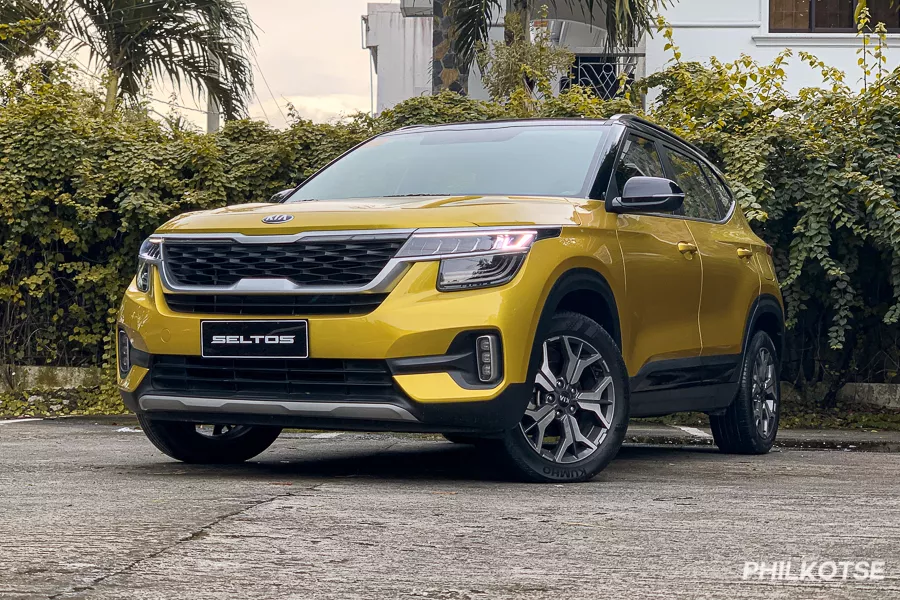
The Kia Seltos
So, how does it compare against its rivals such as the Ford Territory, Geely Coolray, Kia Stonic, and Toyota Rush? How do they differ spec-wise? Read on to find out.
Before going on to compare the said crossover models, don’t forget to read our Kia Seltos review. It offers a more detailed look at the car, plus the opinions and viewpoints of Philkotse’s car experts that we formulated upon testing the said model.
Kia Seltos: Summary of Specs
Size-wise, the Kia Seltos five-door subcompact crossover is 4,370mm long, 1,800mm wide, and 1610mm in height. Its wheelbase is 2,630mm long, and it has a ground clearance of 170mm.
As for exterior equipment, the entry-level variant gets a pair of halogen projector headlamps. The high-spec trims however are equipped with LED headlamps, roof rails, and side-mirror mounted turn signal indicators. Moreover, all variants come with a fin type antenna, rear spoiler, among others.

Overall, its a cool, modern-looking crossover
Inside, the Seltos can seat up to five occupants. The top-spec model features fabric and leatherette seats and automatic climate control, while the base model has fabric only seats and manual air-conditioning. All however come standard with an eight-inch touchscreen with Apple CarPlay and Android Auto, which is linked to a six-piece speaker system.
For the driver, the higher-spec Seltos trims provide cruise control, a push-to-start button, a sliding armrest, and a leather-wrapped steering wheel. It also has six airbags, electronic stability control, hill brake control, hill-start assist. All trims however do get dual front airbags, anti-lock braking, ISOFIX child seat tethers, etc.

A peek into the Kia Seltos' front cabin
For engines, the Seltos uses a 2.0-liter inline-4 gasoline engine. This mill can make up to 147 horsepower and 179 Nm of torque. Power is sent to the front wheels via an intelligent variable transmission (IVT).
In the Philippine market, the Kia Seltos have three variants, and their prices range from Php 1,098,000 to Php 1,505,000.
Kia Seltos vs Ford Territory
When we compare the Kia Seltos vs the Ford Territory in terms of size, it's pretty clear that the Ford model is overall the larger vehicle. That’s because it measures 4,580mm long, 1,936mm wide, and 1,674mm in height. On top of that, it also has a significantly longer wheelbase at 2,716mm. It also has more ground clearance, but the 10mm difference over the Seltos’ is marginal.
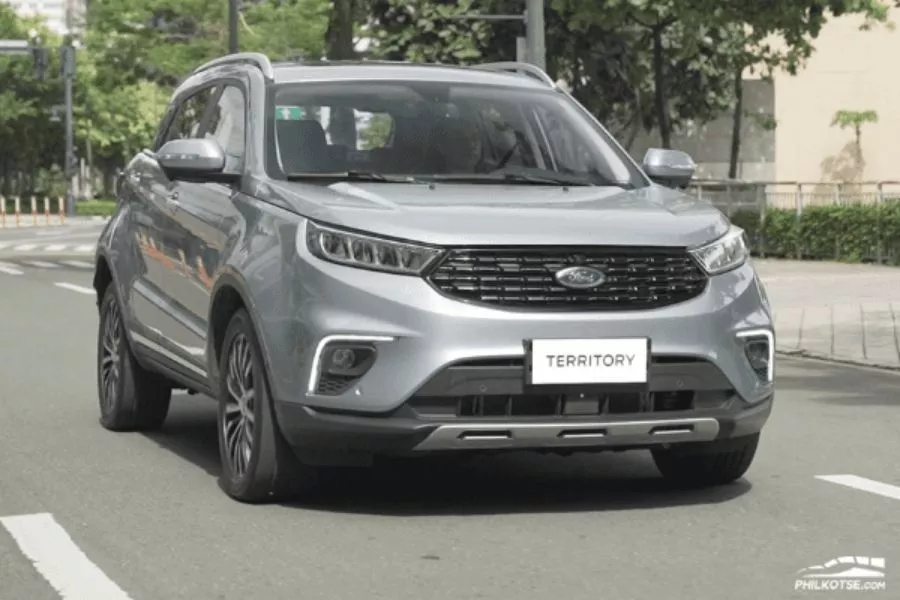
The Ford Territory
On top of its larger size, the Ford model also features a better set of exterior equipment. As standard, it gets LED automatic headlamps with a follow-me-home function, heated side mirrors, and a panoramic sunroof. Moreover, the Titanium+ trim even has rain-sensing wipers.
Just like the Seltos though, the Territory can seat up to five with room to spare for luggage. The top-spec Territory has a digital gauge cluster, which the Seltos doesn’t have. Also, the driver is provided an auto-dimming rear-view mirror.
Apart from that, the Territory’s variants also come standard with automatic air-conditioning. Both also get leather seats, and one cannot deny that the eight-piece speaker system on the Territory Titanium+ is potentially better than the Seltos’ six-piece speaker system.
Moving on to on-board entertainment, the Territory gets a larger ten-inch touchscreen headunit. Like the one aboard its Kia rival, it also has Apple CarPlay and Android Auto.
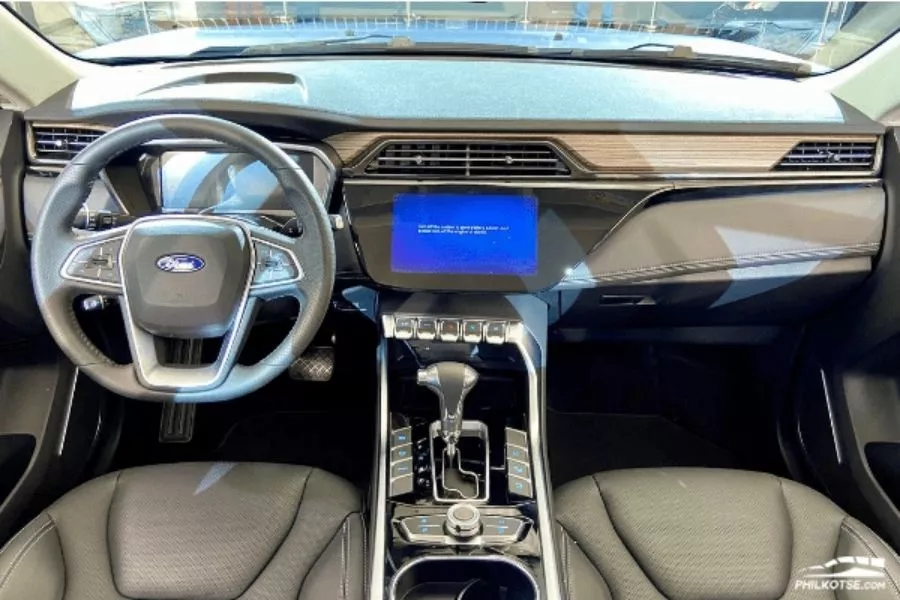
The Territory features a stylish interior
Safety-wise, the top-spec Territory features a more high-tech kit. Chief among these is its autonomous emergency braking system, and adaptive cruise control with forward collision warning. It also has an active parking assist system and blind-spot monitoring.
Furthermore, both variants of the Ford model come standard with six airbags, tire pressure monitoring, anti-lock braking, and traction control. So yes, even the entry-level Territory Trend’s set of safety features is more than a match for the top-spec Seltos SX.
Under the hood of the Territory is a 1.5-liter EcoBoost engine. At most, this mill can produce up to 143 horsepower and 225 Nm of torque. Like the Kia, this Ford crossover is also a front-wheel-drive vehicle, though it uses the more common continuously variable transmission (CVT) instead of a more advanced IVT. Then again, the Territory also has an electronic parking brake that comes with an auto-hold function. The latter of course is absent on the Kia model.
In the Philippines, the Ford Territory has two variants. The Trend is priced at Php 1,199,000, while the top-spec Titanium+ Php 1,299,000.
Kia Seltos vs Geely Coolray
Another competitor to the Kia Seltos in the Philippines is the Geely Coolray. Lengthwise, it measures 4,330mm. It is also 1,795mm wide, and 1,609mm tall. It also has a slightly shorter wheelbase at 2,600mm. It however has more ground clearance than the Kia model at 196mm.
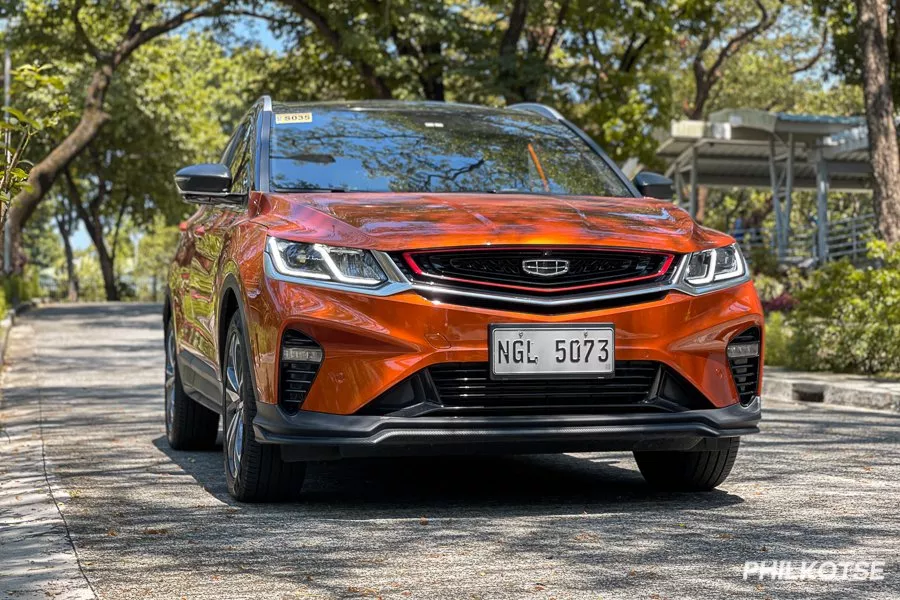
Its one of the more popular Chinese-branded crossovers in the local market today
Just like the Kia, the entry-level and mid-spec variants of the Coolray get halogen headlamps, while the top-spec variant has a pair of automatic LED headlamps. The Premium and Sport trims of the Geely-made crossover however do have a panoramic sunroof, which the Seltos lacks.
Inside, the Coolray can comfortably fit up to five occupants. It also comes standard with a larger 10.3-inch headunit, which lacks Apple CarPlay and Android Auto. As for seats, it also mirrors the Seltos in that the entry-level Coolray Comfort trim has fabric, and the top-spec Sport variant gets leather. The mid-spec Coolray Premium however offers something in-between in the form of PVC seats.
In comparing the Kia Seltos vs the Geely Coolray, the latter has a more comprehensive kit. Like the Ford Territory Titanium+, the Coolray Sport trim also has a fully automatic parking assist system. Also standard on all Coolray variants is cruise control, electronic stability control, traction control, ISOFIX, and six airbags.
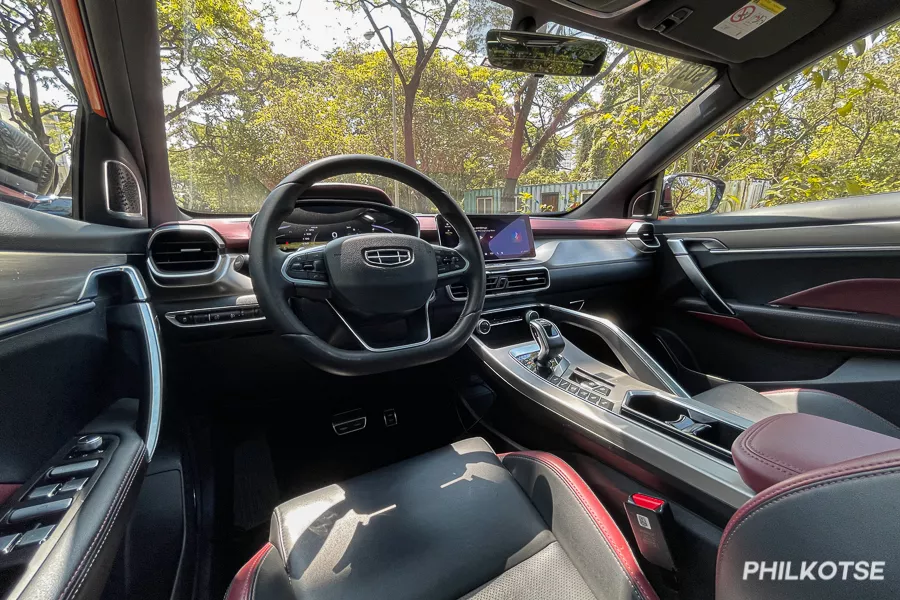
There's a lot to like when it comes to the Coolray's interior
The highlight of the Coolray is its 1.5-liter turbocharged three-cylinder engine. At the maximum, this three-banger can churn up to 177 horsepower and 255 Nm of torque. Power is then sent to its front wheels, via a seven-speed dual-clutch automatic transmission. The said tranny can be controlled manually with paddle shifters. To sum it up, the Coolray is significantly more powerful than the Seltos.
For pricing, the Geely Coolray’s variants range from Php 978,000 to Php 1,198,000.
Kia Seltos vs Kia Stonic
While the Seltos has been around since 2019, Kia then released the Stonic in 2020. Both are subcompact crossover models, but the latter is a bit smaller. Specifically, the newer Kia model has a length of 4,100mm, a width of 1,735mm, and a height of 1,533mm. It also has a shorter wheelbase of 2,570mm, and less ground clearance at 185mm.
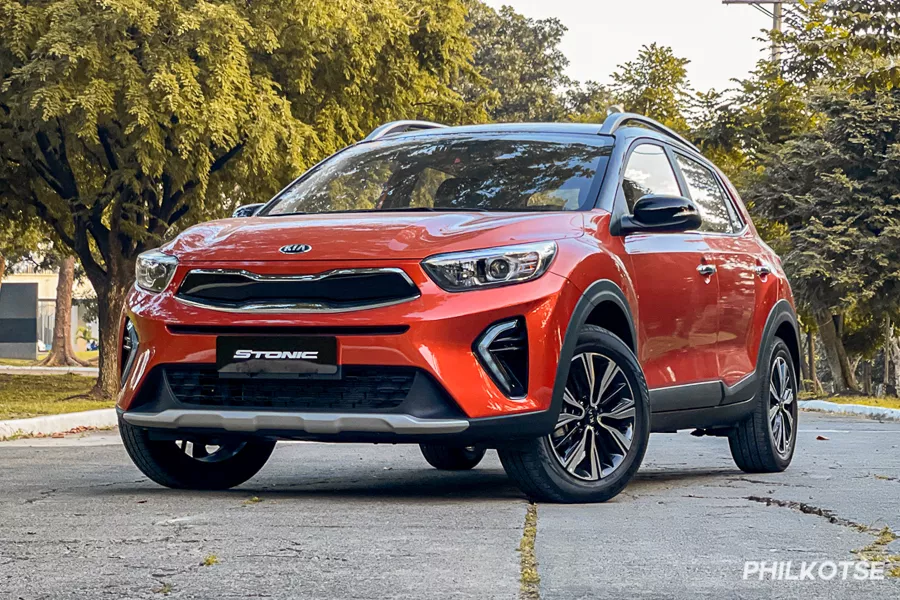
Stonic: the Seltos' younger, more compact brother
In comparing the Kia Seltos vs the Kia Stonic in terms of exterior features, the latter has more. This is because LED headlamps are not available on the Stonic. Although like the larger model, it also has a fin type antenna, roof rails, a rear spoiler, and a rear skid plate.
Inside, the Stonic can fit up to five occupants. Standard on all of its trims is fabric-clad seats, and an eight-inch touchscreen with Apple CarPlay and Android Auto. The said screen is also linked to six speakers just like the one on the Seltos. For air-conditioning, the Stonic is also similar to the larger crossover, in that its top-spec variant has automatic climate control. In turn, its lower-spec variant has manual air-conditioning.
Safety-wise, the newer Kia-made crossover only has two airbags as standard. On the other hand, the top-spec Stonic EX variant does get electronic stability control, and hill-start assist. Furthermore, all Stonic variants come standard with anti-lock braking, ISOFIX child seat tethers, and child-proof door locks.

Its a lot simpler than the Seltos' interior, but nevertheless, it is well-arranged
Moving on to engines, all trims of the Kia Stonic use a 1.4-liter inline-4 gasoline engine. It has two different states of tune. For the LX and EX with the six-speed automatic tranny, the said engine can produce up to 98 horsepower and 132 Nm of torque. The entry-level LX with the five-speed manual makes slightly less at 92 horsepower, but with the same amount of torque. All variants are front-wheel-drive, and it uses a hand-operated manual parking brake.
When it comes to price, the Philippine-spec Stonic ranges from Php 735,000 to Php 925,000.
Kia Seltos vs Toyota Rush
Before comparing the Kia Seltos vs the Toyota Rush, do note that the latter belongs to a completely separate category. Sure, the Rush might look like a crossover model, it is technically an MPV with half a body-one-frame chassis, and half a unibody chassis.
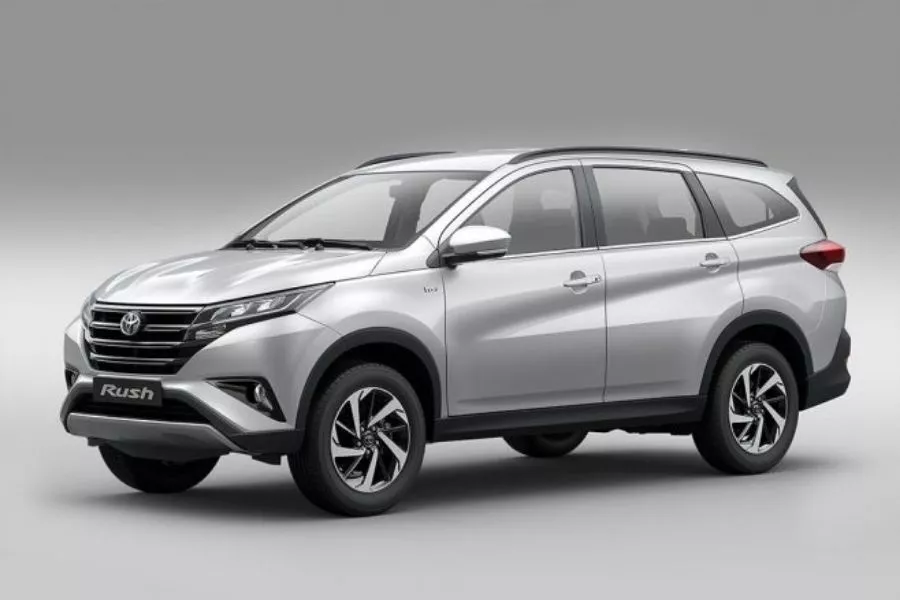
Mechanically, the Rush is close to being an SUV
As for size, the Rush measures 4,435mm long, 1,695mm wide, and 1,705mm in height. Therefore, it is shorter and narrower than the Kia Seltos, but its 1,705mm height is much taller. And while its wheelbase is also shorter at 2,685mm, it has significantly more ground clearance at 220mm.
Moving on to exterior equipment, the Rush in general is better equipped. All of its variants have LED headlamps and front fog lamps. Although like the Seltos, only its higher trims come with roof rails.
Another huge difference between the Seltos and the Rush is passenger capacity. As an MPV after all, the Toyota model can seat up to seven. But like the Seltos, the lower-spec Rush trims, the top-spec Rush G gets automatic air-conditioning, while the lower-spec models have manual air-conditioning. However, all variants of the Rush do provide its driver with a push-to-start button.
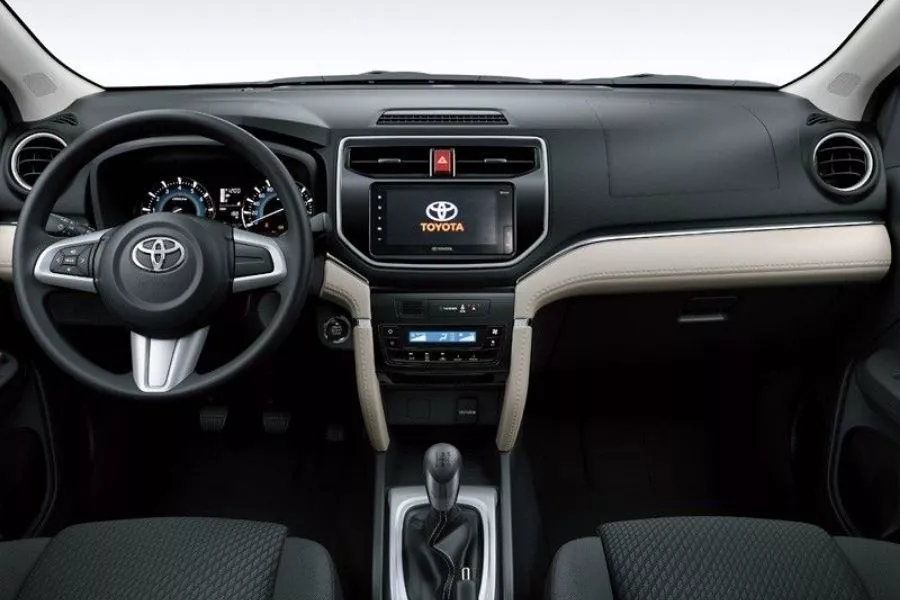
The Rush's cockpit. Its not very fancy, but everything works fust fine
With safety, the Rush also trumps the Seltos as all of its trims come standard with traction control, hill-start assist, and six airbags. That’s on top of the anti-lock braking and ISOFIX.
Under its hood, the Rush uses a 1.5-liter inline-4 gasoline engine that’s able to make up to 102 horsepower and 134 Nm of torque. That said engine is then paired with a four-speed automatic or five-speed manual depending on the variant. Unlike the rest of the models in this article, the Rush is a rear-wheel-drive vehicle.
Price-wise, the Toyota Rush’s three variants range from Php 983,000 to Php 1,100,000.
For more tips on buying your next car, keep reading here on Philkotse.com.
Know more about Kia Seltos 2026

The Kia Seltos 2025 is a subcompact crossover that is designed to appeal to young car buyers. It is available in the Philippines in three variants, with a price ranging from Php 1,198,000 to Php 1,688,000. Under the hood, this model is powered by a 2.0-liter inline-4 DOHC D-CVVT gasoline engine capable of generating 147 horsepower and 179 Nm of torque. Only an Intelligent Variable Transmission (IVT) is paired to the engine.
When it comes to the dimensions, the Seltos spans 4,370 mm in length, 1,800 mm in width, and 1,615 mm in height (1,610 mm excluding roof rails). It also gets a wheelbase and Kia Seltos ground clearance rated at 2,630 mm and 170 mm, respectively. In the local market, this Korean subcompact crossover competes against the likes of the Geely Coolray, Mazda CX-3, and MG ZS.
>>> New and used Kia Seltos 2025 for sale in the Philippines
WHAT'S NEW in KIA SELTOS? | Philkotse Quick Look
Kia Seltos Launch
The Kia Seltos got its name from “Celtos,” Hercules’ son in Greek Mythology. Kia Motors developed this car for millennials who want a head-turning automobile that perfectly merges modern and striking looks with innovative features.
Globally, it was launched in South Korea in July 2019, in India in August 2019, and in Indonesia in January 2020. Kia Motors is known as one of the pioneers in introducing crossover-type automobiles in the Philippines. With this, the Kia Seltos was made available in the Philippines in November 2019.
Kia Seltos Exterior
This athletic and stylish crossover measures 4,370mm long, 1,800mm wide, and 1,610mm tall. On the front, the Kia Seltos 2025 bears fiercely shaped LED headlights with LED daytime running lights and position lamps. Its bold, dark tiger-nose grille looks aggressively modern, providing the vehicle an edge among competitors. Its beefy body has subtle lines designed to enhance its overall aerodynamic capabilities.
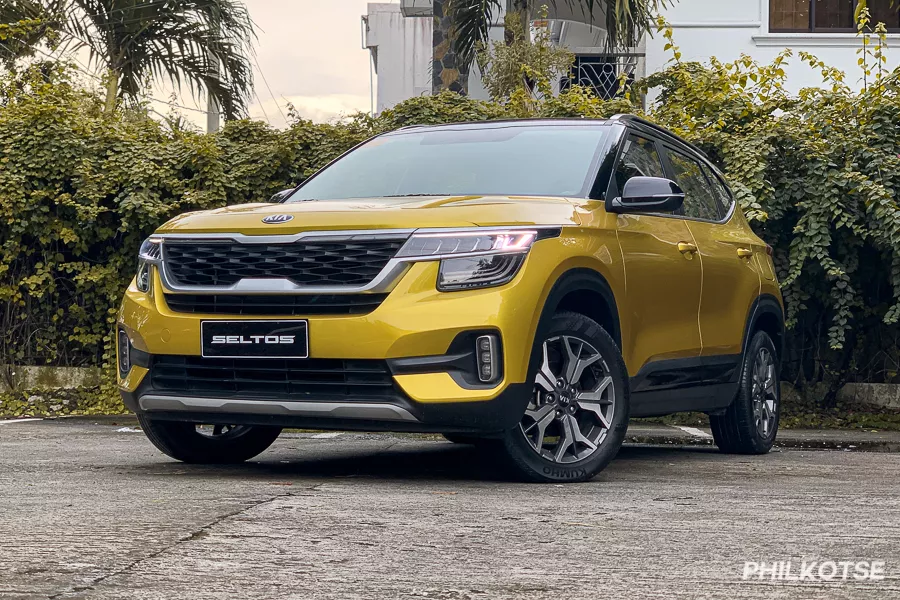
On the front, the Kia Seltos bears fiercely shaped LED headlights with LED daytime running lights and position lamps
At the top, higher variants are designed with a contrasting roof color with a pair of sturdy rails. The rear, on the other hand, is affixed with modern-looking LED taillights. To complete the overall look of the Kia Seltos, it wears a set of 17-inch 215/55R17 alloy wheels.
Kia Seltos Interior
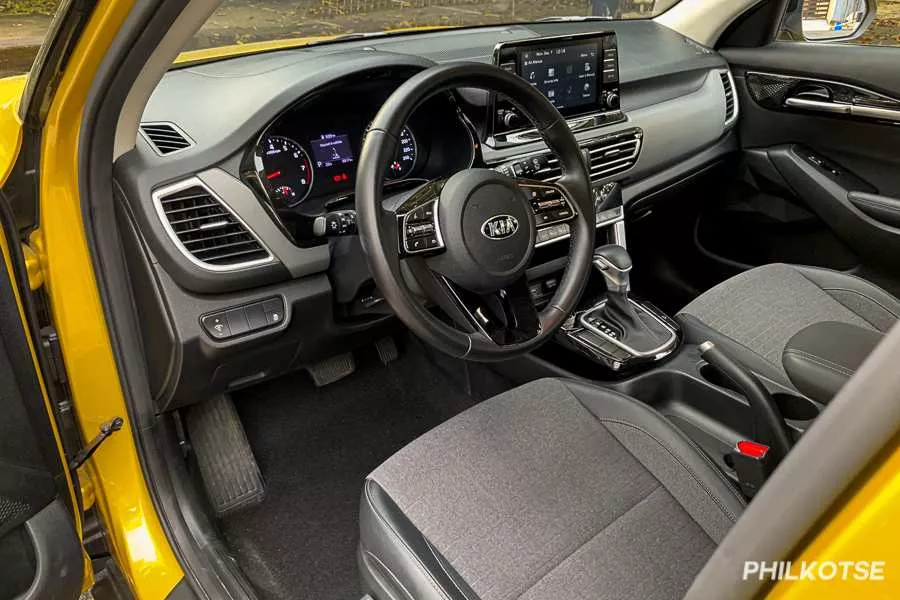
As it is made for young professionals, you can expect a youthful and classy vibe inside the Kia Seltos Philippines. Its all-black interior looks premium. Highlights include a three-spoke steering wheel, ambient lighting, automatic climate control, 60:40 rear seats that can be reclined, and a heads-up display. In terms of cargo loading, it can carry a maximum of 433 liters and can be doubled when the rear seats are folded.
Technology and Safety Features
All variants of the Kia Seltos are generously affixed with a touchscreen infotainment system. It comes with Apple Carplay and Android Auto compatibility. Top-spec models are equipped with cruise control, rear parking sensors, keyless entry, front proximity sensors, and a reverse camera.
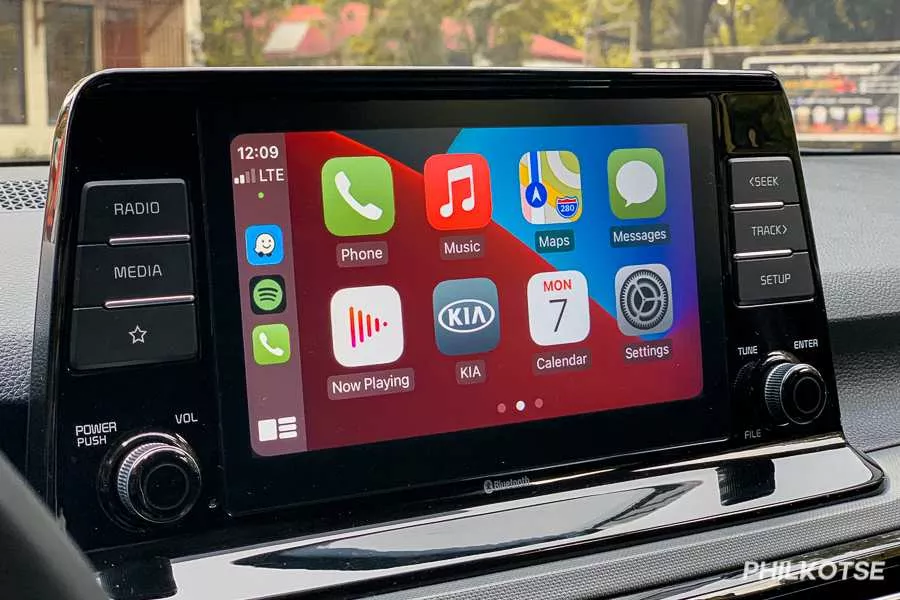
All variants of the Kia Seltos are generously affixed with a touchscreen infotainment system.
Safety is guaranteed as the Kia Seltos comes with a good number of SRS airbags, anti-lock braking system, three-point seatbelts, and ISOFIX child seat anchors. Higher variants are furnished with hill-start assist, stability control, and dynamic brake control.
Platform and Chassis
For suspension, it is built with a Macpherson Strut and coil spring at the front and a coupled torsion beam axle with coil spring at the back. The Kia Seltos is manufactured using Advanced High Strength Steel (AHSS). It is designed to provide the utmost protection to its riders, efficiently control the vehicle, and guarantee excellent performance on roads and tough terrain.
Engine and Drivetrain
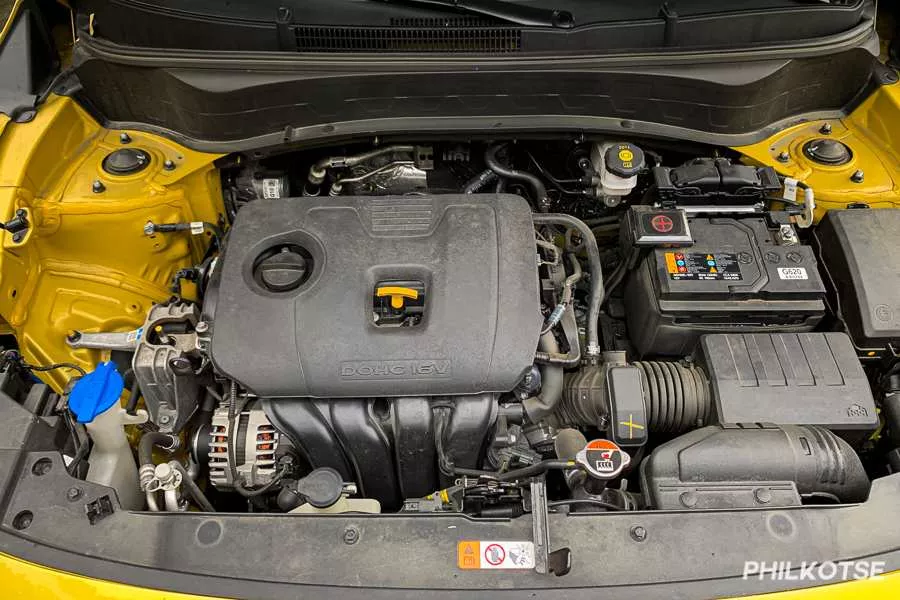
This five-door, five-seater subcompact crossover runs using a 2.0-liter gasoline engine paired with Continuous Variable Transmission. The Kia Seltos can produce 147 hp with a torque of 179 Nm.
Available colors for the Kia Seltos 2025 Philippines are Starbright Yellow, Gravity Gray, Iron Gray, Dark Ocean Blue, Mars Orange, two-tone Starbright Yellow with Cherry Black, and two-tone Clear White with Cherry Black.
The Kia Seltos is a well-rounded subcompact crossover thanks to its various features. One can say that it has the best color package locally as compared to rivals such as the Mazda CX-3 and Geely Coolray.
Kia Seltos 2025 Price List
Let's check out the Kia Seltos 2025 price in the Philippines.
| Variants | Price |
|---|---|
| Kia Seltos 1.5 LX AT | ₱1,198,000 |
| Kia Seltos 1.5 EX AT | ₱1,298,000 |
| Kia Seltos 1.4 SX AT | ₱1,688,000 |
Kia Seltos Pros & Cons
Pros
- Well-integrated tiger nose grille
- A wide array of flashy color options
- Refined powertrain
Cons
- Only one engine option is brought locally
- Not many amenities are available for second-row passengers
- Interior is not as plush as exterior
Kia Seltos FAQs
1. How many seats does the Kia Seltos 2025 have?
The Kia Seltos 2025 provides a two-row vehicle with 5 seats.
2. What is a highlight of the Kia Seltos 2025?
One of the highlights of the Kia Seltos 2025 provides outstanding inside space and practicality for moving cargo for such a small, inexpensive SUV.
3. Is the Kia Seltos Philippines a reliable car?
Yes, the Seltos is definitely a good car. Expect safety, versatility, and overall excellent performance from this well-made automobile.
4. Is the Seltos worth buying?
Yes, it absolutely is. Because the Seltos is definitely a good car. Expect safety, versatility, and overall excellent performance from this well-made automobile.
5. Is the Kia Seltos automatic?
Yes, all Kia Seltos variants come with automatic transmission.
6. What type of vehicle is the Kia Seltos 2025?
Type of the Seltos 2025 is SUV.
₱ 1,208,000 - ₱ 1,580,000
ExploreRecent posts
- Top 5 subcompact SUVs to buy in the Philippines in 2021 Nov 08, 2022
- 2021 Kia Seltos Expectations Jan 29, 2021
- Kia Philippines price List 2026 Oct 08, 2020















